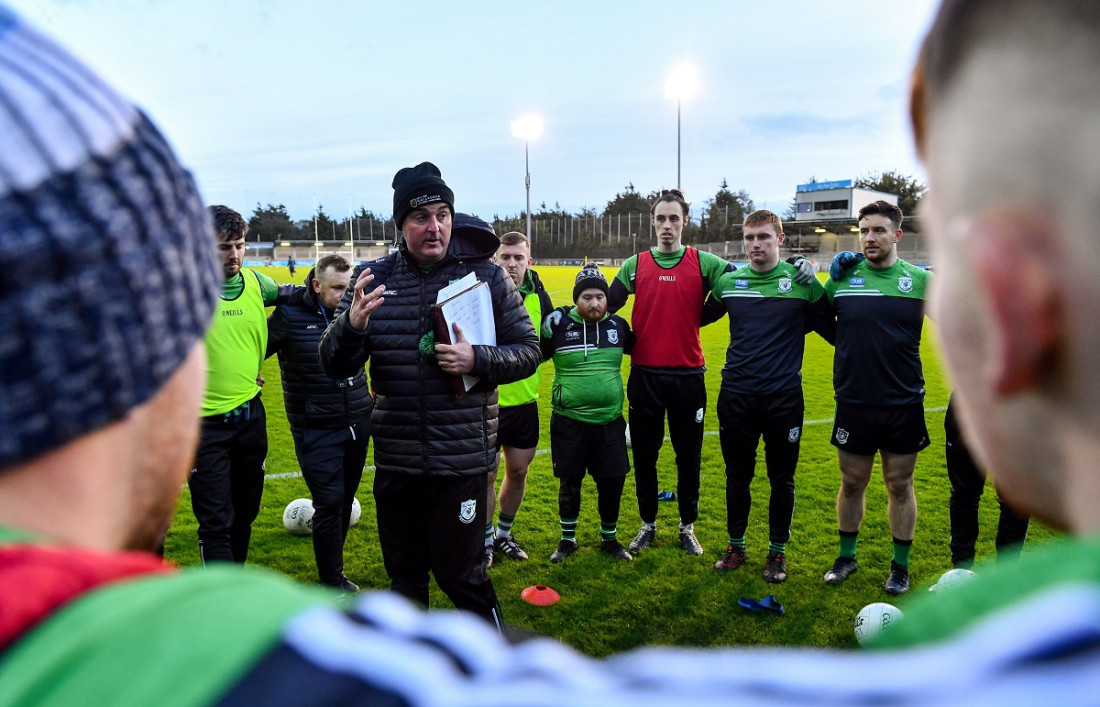By Gareth Fox
LISTEN in on any pre-match talk and you’ll hear the words “work rate.” The single most demanded or expected attribute of any player about to go out and perform. Yet in today’s world of GPS and distance covered, perhaps a faux amis.
The recent introduction of stats has been extremely interesting in the progression of the game; there is no doubt that teams have been able to reap the benefits of knowing how certain strategies work; knowing how many long kick-outs you are winning in a game can allow you to see whether or not what you are doing is working.
I recently saw a stat of a team who perpetually lost the first five minutes of every second half. I found that fascinating and useful. From something as simple as that you can then readjust your half-time message to that team. You can look at how you speak to them – are you being too calm or too intense? Fine margins, fine changes, different or improved results. And let’s face it, results are king. But for me, the most fascinating stats are told by the GPS – or, in reality, not told by the GPS.
In the context of sports, work-rate refers to the amount of physical effort and activity expended by an athlete during a given period of time, usually within a specific game or match. It is a measure of the player’s intensity and stamina. But for what cause or what end? It’s one thing – covering an enormous distance during a match – but for what purpose?
I heard a great anecdote last year of a rugby player being pulled on the limited amount of ground the GPS said he covered in a game. But his reply was that he got to the ruck quicker than anyone else and had more positive contributions than any other player. The GPS was saying that he hadn’t “worked hard” and yet he had been the player dictating the direction of the game. And that’s where we find that the term “work rate” is lost in some misleading translation. Running for running’s sake is just running, if it doesn’t have any benefit to your team.
I recently asked a group of players to look at their GPS stats and justify every meter covered through the lens of being a good teammate. If some of the runs didn’t help someone on their team, then why were they making them? Because it’s about hard work? Because it’s expected? Because if they don’t cover the ground then it looks like they didn’t show work rate?
Here’s the thing, we demand work-rate without really knowing what it means or why. What we should really be demanding is that you go out to be a good team-mate – the distance covered will take care of itself. Here’s why:
1) Motivation and Support: A positive and supportive team environment can inspire athletes to give their best effort. When team-mates encourage and motivate each other, it creates a sense of camaraderie and a shared goal. This encouragement can lead to increased work rate as players strive to perform at their best for the benefit of the team.
2) Accountability: Good team-mates hold each other accountable for their efforts and performance. When athletes know that their team-mates are relying on them and expecting a high level of commitment, they are more likely to push themselves and maintain a strong work-rate. The sense of responsibility to the team can help athletes stay focused and dedicated.
3) Collaboration and Communication: Effective teamwork involves communication and collaboration.
When team-mates communicate well on the field, they can coordinate their efforts, make quick decisions, and maintain a high level of activity. This coordination and understanding among team-mates can lead to increased work-rate as they work together to achieve common objectives.
4) Positive Competition: Healthy competition within a team can foster a culture of continuous improvement. When teammates push each other to excel and strive to outperform one another in a positive way, it can elevate the overall work-rate. Athletes may be motivated to work harder to match or exceed the efforts of their teammates, resulting in an increased intensity and work ethic.
5) Shared Goals and Trust: A strong team bond based on shared goals and trust can enhance work-rate.
When athletes trust their team-mates and believe in the collective objectives, they are more likely to invest greater effort and energy into their performance. They understand that their individual contributions directly impact the team’s success, which can inspire a higher work-rate.
6) Role Modelling: When team-mates lead by example and consistently display a strong work-rate, it can influence others to follow suit.
Seeing a team-mate giving their all and making significant contributions can inspire others to do the same. Leading through action can create a positive ripple effect, motivating the entire team to increase their work-rate.
In summary, being a good teammate through support, accountability, collaboration, positive competition, shared goals, trust, and role modelling can create an environment that fosters a higher work-rate among athletes.
By working together and fostering a positive team dynamic, athletes can push each other to new levels of effort and performance.
Receive quality journalism wherever you are, on any device. Keep up to date from the comfort of your own home with a digital subscription.
Any time | Any place | Anywhere












